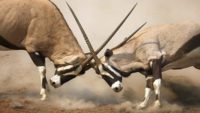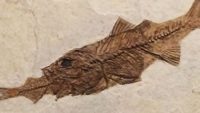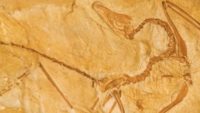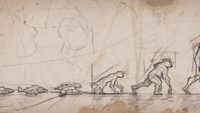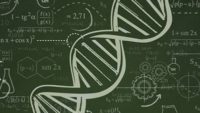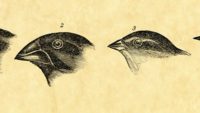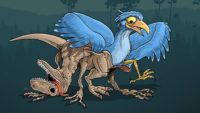The razor clam gives digging lessons to surprised and envious engineers. …read more Source: creation.com
By Dr. Elizabeth Mitchell Our reflex response to pain is a blessing, prompting us to withdraw at the first sign of trouble and preventing worse harm. …read more Source: AIG Daily
By Ken Ham We’re constantly learning fascinating new things about hard-to-get-to places like space—“the final frontier”—and about the deep ocean here on our planet. But some incredible discoveries are right before our eyes—including an organ in our bodies that was just discovered! It’s a reminder of how complex the human body is and how finite and fallible man is. This potential organ, which has largely been missed by researchers for decades, is one of the largest in the human body. It’s a fluid-filled organ in connective tissue throughout our body, including below the skin’s surface. Researchers named it the “interstitium,” [More]
Fungal infections can be a pain to eradicate. But new results show why these infections can take an even tighter hold on people or animals that are missing a specific protein. The international research team that discovered this protein, and its importance, named it MelLec. This protein helps fight fungal infections by identifying a specific type of melanin that fungi make. Several aspects of this new discovery fit a creation-based… More… …read more Source: icr.org
If evolution means “change,” then yes, natural selection is evolution/change. Typically evolution means that natural selection is molecules-to-man evolution. …read more Source: AIG Daily
By Ken Ham Being a scientist isn’t always a very glamorous job—sometimes it can be downright nasty. A recent news item carried the story of a team of scientists at the University of Leicester in England who are recording the results of a really smelly study that involves watching fish and worms rot. This team of paleontologists is “rethinking the way fossils form” with their experiments and observations. They’ve collected specimens from the most “primitive” creatures, or at least representatives of the most primitive creatures, such as hagfish, eels, and worms, that evolutionists believe have been around for 300–500 million [More]
A psychology professor has gone off the deep end with his call for twisted genetic experiments in the name of atheism …read more Source: creation.com
By Ken Ham There’s a test called “the duck test,” and it’s very complicated. You ready? This is how it goes: “If it looks like a duck, quacks like a duck, and swims like a duck, then it probably is a duck.” But because they begin with the wrong starting point (man’s word), evolutionists have changed this test into this: “If it looked like a bird, had feathers like a bird, and flew like a bird, then it was probably a dinosaur.” Researchers found its wing bones matched that of modern birds with the ability to take off quickly and [More]
A long-standing evolutionary argument is that creature diversity is essentially a random process. But new discoveries increasingly show serious flaws in this claim and are highly consistent with a design-based framework. The findings support the idea that adaptation is intensely purposeful. Science Daily reported one such find with the attention-catching title: Hawaiian stick spiders re-evolve the same three guises every time they … More… …read more Source: icr.org
Claims that the human eye is wired backwards have proved shortsighted. …read more Source: creation.com
By Heather Brinson Bruce Every day, the world’s master of disguise, the cuttlefish, finds new ways to blend into its ever-changing surroundings in search of its next meal. Cuttlefish are so good at imitation that they can instantly transform into a black-and-white chessboard or any other surrounding that mischievous researchers can think of. …read more Source: AIG Daily
By Ken Ham An article appeared recently in the Mirror, a UK news site, featuring an interview with Jane Goodall, the famous evolutionary primatologist who studied chimpanzees in Tanzania. Dr. Goodall was discussing her early days working with wild chimps. She shares that she originally thought chimps were nice, only to later learn they can “rip your face off.” Are We Evil Because of Our Ape-like Ancestors? Apparently, the chimpanzees were so dangerous that once Dr. Goodall had a baby, the baby had to live in a cage so the chimps wouldn’t steal him and kill him. Eventually she watched [More]
By Ken Ham Apparently spending time in outer space can actually lead to long-term changes in your DNA. A fascinating recent study on the world’s only identical twin astronauts, Scott and Mark Kelly, showed that spending nearly a year on the International Space Station (ISS) changes how your genes are expressed. Scott went to the ISS for 340 days while his retired, identical twin brother, Mark, stayed here on earth. When Scott returned, researchers compared his DNA to his brother’s. Identical twins have virtually identical DNA (though mutations that accumulate during your lifetime mean their DNA isn’t 100% identical), so [More]
A recent opinion piece posted on the Chemistry World website1 notes that Richard Dawkins’ 1976 book The Selfish Gene deeply motivated a generation of biologists to adopt a gene-centered framework to explain why biological phenomena seem to operate for specific purposes. The book’s persuasion notwithstanding, the article notes ongoing challenges to the validity of Dawkins’ “selfish gene metaphor.” … More… …read more Source: icr.org
Pigeon fanciers’ fancy pigeons fuelled Darwin’s flights of fancy …read more Source: creation.com
When these insects mate and shed their wings, it flies in the face of Darwinian thought. …read more Source: creation.com
By Dr. Alan Gillen Effects of horizontal gene transfer, seen from the viewpoint of diversity analysis of bacterial lineages, may seem a rather abstruse topic. Yet horizontal gene transfer among bacteria usually has immediate, practical effects on human health. …read more Source: AIG Daily
By Ken Ham According to a recent study, there’s been a minor tweak in the evolutionary story of the early evolution of life. Photosynthesis, the process by which plants, algae, and some microbes produce oxygen, might have evolved a billion years earlier than previously thought, and faster too. Linear calculations put the origin of photosynthesis older than the earth itself! Yep, just a minor tweak! The original evolutionary story went this way: cyanobacteria were the first life to produce oxygen. Since there was no oxygen before these microbes started making it, oxygen wasn’t available until about 2.7 billion years ago, [More]
A conclusion does not prove the premises are true. That is, if the answer is “four,” we could arrive at that any number of ways: 2 + 2, 5 – 1, etc. In the same way, evolutionists often assume that since certain species or traits exist, this is proof of evolution because that’s how it must have happened. …read more Source: AIG Daily
By Ken Ham A few weeks ago, news headlines around the world proclaimed that the oldest known “Briton” (by secular dating methods) was dark-skinned, according to genetic analysis (which was done for a TV documentary). But now new headlines are calling this pronouncement into question. These new reports are more tentative, stating that the results weren’t absolutely conclusive and that new research has shown even more genes than we thought are responsible for skin shade. It goes on to say that, even with current technology, we really can’t tell the shade of an ancient person’s skin yet, especially considering how [More]
The amazing variety in these magnificent animals serves as a reminder that things do not make themselves. …read more Source: creation.com
In the animal kingdom, many types of creatures use stereo vision to determine the distances between them and visible objects. In humans, each of our eyes records a slightly different version of what is observed. These two different views are then accurately merged in our brains to produce a single image—computationally using the differences between the two images to allow us to visually gauge depth and distance. This process, referred… More… …read more Source: icr.org
By Dr. Nathaniel T. Jeanson Consistent with the young-earth creation explanation for the origin of species, the scientific community recently observed the formation of a new bird species in real time. But how did this new species form? In a manner consistent with evolution? Or with YEC? …read more Source: AIG Daily
Evolution, it is claimed, removes the need for a designing intelligence of life on Earth, but this amounts to the logically absurd proposition of ‘Unintelligent Design’. …read more Source: creation.com
By Ken Ham As we’ve reported numerous times on our site, scientists have observed lizards evolving into lizards, salmon evolving into salmon, moths into moths, mice into mice, bedbugs into bedbugs; and more lizards into lizards! I must admit, the evidence that organisms evolve into organisms like themselves is pretty overwhelming! Of course, I say that tongue-in-cheek, but examples of adaptation, speciation, and natural selection are used over and over again as evidence for molecules-to-man evolution—but they’re not! What they really show are examples of what God’s Word teaches—everything reproduces according to their kinds. Lizards produce lizards, salmon …read more [More]
By Dr. David Menton According to many evolutionists today, dinosaurs are really not extinct but rather are feeding at our bird feeders even as we speak. But what does the Bible tell us about the origin of birds, and just how good is the scientific evidence that some dinosaurs evolved into birds? …read more Source: AIG Daily
Dr. Christopher Gardner, director of nutrition studies at the Stanford Prevention Research Center, and his colleagues conducted a study on 609 overweight and obese adults living in San Francisco’s Bay Area. Nutritionists coached the adults not to bother with counting calories. They should eat until they felt full, but eat plenty of vegetables and whole foods. The study results held a few surprises. First, the study pa… More… …read more Source: icr.org






















